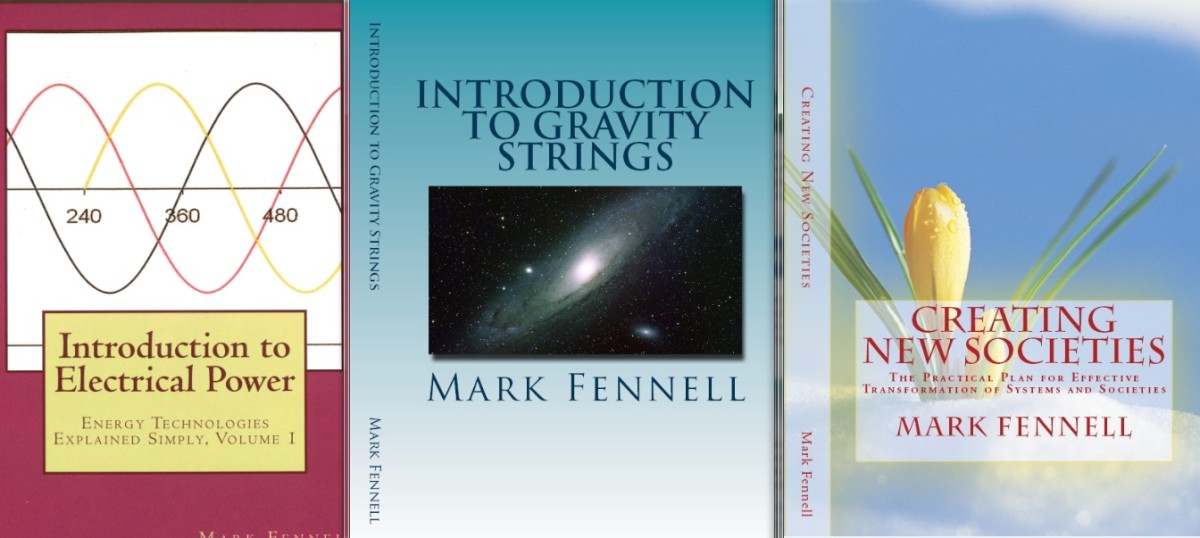E-books on Power Grids and Electrical Utilities
Introduction to the Transmission of Electrical Power (ebook)
This book provides an overview of the transmission of electrical power. The primary topics of the book are the sequence of events from power plant to home, and the sequence of events from the final transformer through a home appliance. Other topics include transformers, power lines, substations, and types of wiring. A few specialized topics will be discussed such as transformer arrangements and the power requirements of large businesses.
Power Lines: Technologies and Practical Tips (ebook)
This book explains all technologies and practical issues related to power lines. The first chapter provides an overview of issues related to power lines, including Right of Way and choosing the best material. This is followed by detailed discussions of materials to use in the wiring of a power line and the types of insulation.
The second chapter discusses wire sizes in power lines. We discuss how to select the best size wire considering all factors. This chapter also explains the most common units for wire sizes.
The third chapter discusses high voltage transmission lines, including the types of transmission lines, power loss, and whether to install above or below ground. The chapter also discusses in detail the transmission towers, including the structure of towers and the placement of the power lines.
The fourth chapter discusses weather and power lines. Much of the chapter offers practical tips for ensuring that the towers resist storms and natural disasters.
The fifth chapter discusses the safety of high voltage power lines, including the effect of electromagnetic fields on humans.
The sixth chapter discusses the details of community level distribution lines, including types of distribution lines and maintenance.
The final chapter discusses the relatively new technology of High Voltage DC Power Lines. These power lines can be efficient in certain circumstances, but will be less efficient if used improperly. This chapter explains how HVDC power lines work, and discusses where these power lines are most effectively used.
Underground Cables: Basic Concepts, Design Options, Practical Tips (ebook)
This book discusses the technologies of underground electrical cables. The first chapter discusses the basic concepts. Topics include comparison of above ground vs. underground power lines, and where cables are most suitable.
The second chapter is devoted to the relationship of geology and the placement of underground cables. The third chapter discusses advanced cable design and practical tips when laying cable. Topics include: choices for insulation, choices for cable jacket, tips for the direct bury method, and tips the for conduit method.
Utility Operations and Quality Control (ebook)
This book explains the operation of utilities and the important factors of quality control when operating a utility company.
The first chapter provides an overview of quality control for utilities. This chapter also discusses how to ensure that there is enough power to meet demand at any given time.
The second chapter discusses how to ensure power is always transmitted effectively. The third chapter discusses how to re-start a power plant after a major shut down. This chapter also provides an overview of communication systems and an overview of grids.
The fourth chapter discusses monitoring and communication systems. This chapter explains the SCADA system, discussing the components and how it works. This chapter also explains the types of translation devices and various options for communications.
The remaining chapters discuss the specific factors affecting the quality of power. These factors are voltage, frequency, and temperature. Each of the remaining chapters describe the causes, effects, and protection against significant variations in each factor.
Power Grids Explained Simply (ebook)
This book explains the technologies and processes of grids. In this book you will learn everything about grid operations, power distribution, and reliability.
The first chapter provides an overview of grids, including operations and limitations. Chapter two discusses the grid operators, including Independent System Operators (ISOs), Regional Transmission Organizations (RTOs) and the Federal Energy Regulatory Commission (FERC).
Chapter three explains the sequence of grid operations, starting with the most basic and evolving to more complex. We also have a brief discussion on power marketing.
Chapter four discusses the important concept of quality control of grids. We provide a list of the most important factors which will ensure quality control, and how the grid operators can manage those factors for optimum reliability.
In chapter five we discuss the primary causes of grid failures and provide methods to reduce grid failures. We discuss the North American Electrical Reliability Council (NERC) and their work in ensuring reliability. We also discuss the threat of terrorist acts on grids.
The final chapter discusses the future of electrical distribution. This chapter lays out the vision and the reasoning from energy experts regarding what is best for our energy future.
